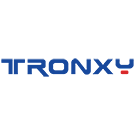Smarter Shopping, Better Living!
Newsletter
- Company Info
- About Us
- Contact Us
- News Center
- Support Center
- User Center
- Register
- My Account
- My Orders
- Tracking Order
- Forget Password
Copyright © 2012-2023 Tronxy 3D Printer All Rights Reserved.

X5SA-500 Pro + G1
We quickly upgraded the springs, and that was a HUGE time saver.
For reference my kids range from preschool- high school and they all use it in varying degrees.
Also, if you do buy this there are some really great Facebook groups that can help with any questions you have. I wish I had found them before I spent so much time with the software.
I've printed about a dozen pieces so far and every one had uniformly excellent print quality. Fused Deposition Modeling (FDM) 3D printers like this that build objects by laying down thin layers of melted filament don't build truly smooth surfaces from the side (because the side is actually many different layers stacked on top of each other), but this printer has such thin layers that I had to bring the objects right up close with a light shining on the surface to see the lines. FDM printers have a resolution that is specified by the minimum thickness of each layer, and the 3DWOX1 just qualifies as a high resolution printer with a resolution of 50 microns in the maximum quality slow mode. The very best printers I've seen go down to 10 microns; by way of comparison a typical sheet of copy paper is about 50 microns thick. It's worth noting that while 3D printers often specify minimum thickness, which in the x, y, and z coordinate system is the smallest thickness in the z (height) dimension, few if any printers seem to specify resolution in the x and y dimensions, and I don't think it's the same. You see the effects of this the most when an object has a curve in the x y plane; rather than being smooth, it tends to have small blocky ridges where the printer tried to create a smooth slope.
Once you have setup the printer and printed the built-in test objects and are looking for things to print, I highly recommend checking out the Thingiverse website, which has literally millions of free objects of every conceivable type for you to download. The objects are packaged in stl files, which are kind of like CAD drawings I think. Before you can actually print them though you'll need to convert them into gcode, which is the language 3D printers actually understand.
This is getting a little long, so let me just summarize: I am very happy with this printer so far, but I went into it accepting that it was a little restrictive on materials, a little expensive both up front and in maintenance, and is really designed for people looking for a low-hassle way to print objects out of basic materials.For people like me who are brand new to the whole 3D printing concept, it makes for a very gentle introduction into that world.